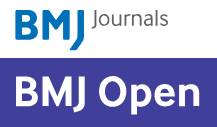Socioeconomic gradient in physical activity: findings from the PERSIAN cohort study
Authors
Affiliations
Abstract
Background: The level of socioeconomic-related inequality in physical activity in Iran is largely unknown. This study investigates socioeconomic-related inequality in poor-physical activity (PPA) among Iranian adults.
Methods: A total of 129,257 adult participants enrolled in the PERSIAN (Prospective Epidemiological Research Studies in IrAN) Cohort were included in this study. Physical activity of adults was measured using metabolic equivalent rates (METs). Physical activity less than 41 METs/hour/day was considered PPA. The Concentration index (C) was used to quantify socioeconomic-related inequality in PPA. Moreover, the C was decomposed to identify the relative contribution of explanatory variables to inequality in PPA.
Results: There were significant regional variations in physical activity level among Iranian adults (29.8-76.5%). The positive value of C (0.098, 95% CI = 0.092 to 0.104) suggested that the higher concentration of PPA among higher socioeconomic status (SES) adults in Iran which was consistently observed in all cohort sites.
Conclusions: The higher prevalence of PPA among Iranian adults, especially, women and older adults, warrant further public health attention. Since PPA is concentrated more among the high-SES population in Iran, strategies for the promotion of physical activity should focus more on economically well-off population.
Keywords: Inequality; Iran; PERSIAN; Physical activity; Socioeconomic status.

